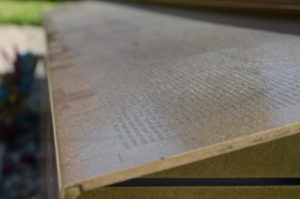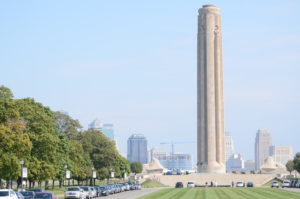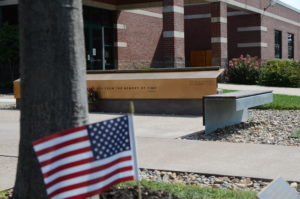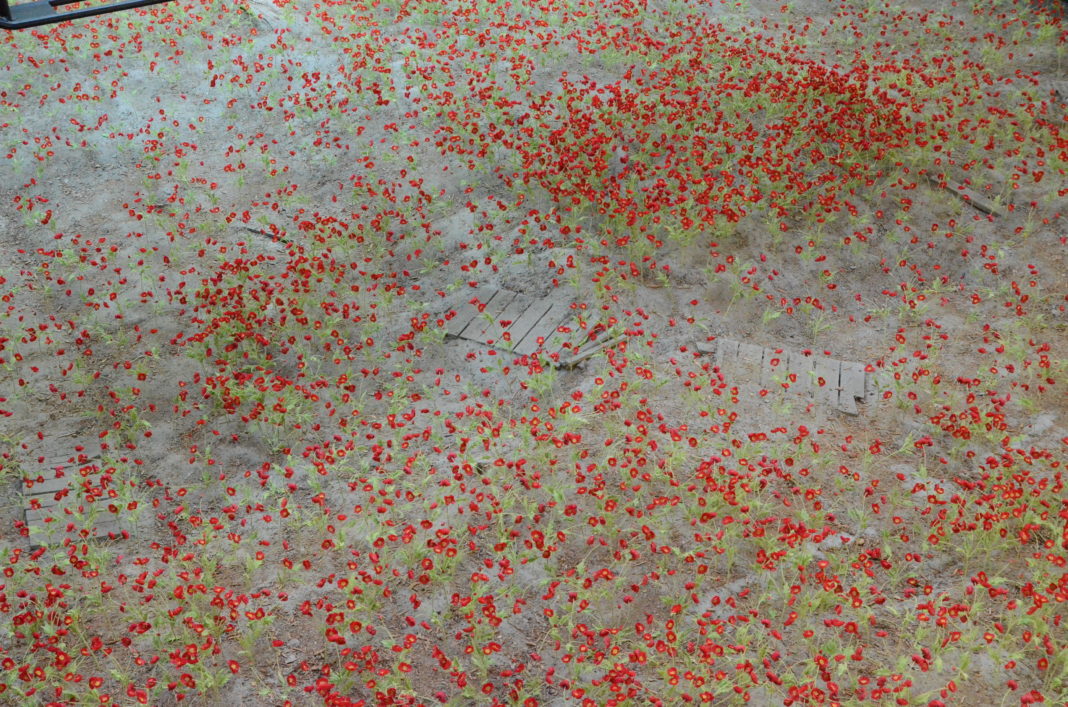Hailey Paulson
How is history remembered? Is it forgotten? Do people want to forget history?
A week and a day has passed since the 16th year anniversary of 9/11. This event has struck the nation to its core and caused much pain and agony in the lives of all Americans.
As the years add up since this event, the question is brought about of how will Americans remember this history? How will they document this event that silenced so many Americans as the planes crashed through the towers and so many watched them fall?
History teacher Matt Turner finds that the greater the time between the event, the more distant we travel from the impact. “I think it’s changed over the years. Of course as we get further away it becomes more of just a historical event for a lot of people…It’s just natural that as we get further away from events that they tend to mean less,” said Turner.
Turner thinks that the future history classes will differ when reflecting on 9/11. “I think we’ll associate it in the future more with the wars that followed. I think ten, twenty years from now we’re gonna look back on this period as being defined by constant warfare with the invasion of Afghanistan, Iraq where we still have troops today…It truly was the beginning of a new era in American history,” said Turner.
9/11 brought America together through the tragic event that occurred. Sympathies were offered worldwide watching the devastation. The moments of the most intense pain and destruction tend to bring together the people across the world regardless of cultural differences.
In Overland Park, KS, there is a memorial at the Fire Training Center honoring all who lost their lives with information about the each attack during 9/11. This memorial is one of many that honors the loss of life during the attacks.

This phenomenon can be applied to wars as well. How are these conflicts preserved? How are they recorded? Museums hold artifacts that display the different sides of an event that are observed to learn about the event that has occurred.
In Kansas City, the Liberty Memorial and National WWI Museum preserves the history of the first World War, but it is separate from other museums.
Mike Vietti, the Director of Communications and Guest Services, explains that “this museum is absolutely unique from other museums across the world…the leadership made the decision to not have the museum telling a proprial story, to not have the museum focus on the American story and as a result, the museum possess the most comprehensive collection in the world,” said Vietti.
The collection from the WWI museum contains artifacts of all kinds. The museum has over 300,000 objects, documents and literature from the war. One of the goals of the WWI museum is to personalize each experience for its visitors.
There are multiple engaging exhibitions in the museum that presents detailed and specific information about everything in the museum. “By doing that in a variety of different ways, it helps personalize the story about the conflict which at this point was more than a hundred years ago,” said Vietti.
Vietti believes that making each experience personal to the visitor is tremendously important. “In a way it breaks down barriers and it allows you to think in the context of ‘there was a real living person who wore this uniform’,” said Vietti.
The WWI museum carries specific information even relating to Kansas City. According to Vietti, the small details carry just as much weight as the larger facts of the war. “It’s a way of bringing that story back to the individual person on an individual… it allows people to forge a greater connection than if you talk about things in an abstract and larger terms,” said Vietti.

The goal of this museum is education to an audience who mostly has not experienced the events of WWI for themselves. “Our mission is not to glorify war. The mission of the museum is to educate the public on the enduring impact of WWI. We hope that people leave this museum feeling and hoping that something like this never happens again,” said Vietti.
With the act of preserving history, comes a concern of how filtered our history is. Many times countries can delegate and put forth their own story excluding the things that are factual so that they receive more glory.
Even within certain areas of the US, some states can decide what school literature can be included in the curriculum. Former German teacher Julie Hume thinks that there is a lot more danger in the US history than what most people would assume.
“The problem that we have is a lot of people want a national narrative… the whole narrative has to do with freedom not looking into the fact that along that road to freedom we’ve enslaved many people. We’ve been involved in many questionable actions,” said Hume.
This idea of a national narrative bridges all over the US with many of the childhood stories still taught today in elementary school. Stories like the Thanksgiving feast with the Indians as well as other stories are not entirely true and are misleading to the treatment of people groups by the US.
Hume sees this idea as risky. “Sometimes our actions are not pro-American. Sometimes our actions don’t fit that narrative when we look at history. And until we stop looking at history as a way to forward patriotism and we start looking at history as a discipline where we need to look at things with honesty and insight, then, I think it’s going to continue to be a problem,” said Hume.
While Hume believes that our history is tainted in how the US has treated people, she still is proud of the history that has happened. “I believe it’s possible to love your country even though it has flaws but I think it’s important to recognize those flaws,” said Hume.
For Hume, she desires to see the flaws and the glorified deeds of the US put together. “We need to have them side by side with the things that we are proud of…A lot of times we can look at it [history] through the window of their own time period and it becomes understandable but not excusable,” said Hume.
Despite the sinful deeds that may have occurred in history, there are still results that people praise.
In the WWI museum, there is a reproduction of No Man’s Land in Flanders in northwestern Belgium with 9,000 silk poppies. Guide at the WWI museum, Dennis Murphy, describes the environment during WWI. “Nothing grew except the wildflower, the poppy…It has become a symbol of remembrance for the great war,” said Murphy.
This symbol of WWI continues to hold the weight of the event that occurred through the years 1914-1918. “As you look down below you will see nothing but debri and what appears to be mud. You will see nine thousand flowers down there. Each single flower that you see represents the death of a thousand men. It’s a very strong visual of nine million who gave their lives,” said Murphy.
At LSW, history teachers set up flags to symbolize the loss of life that occurred on September 11th. “Initially we did have one flag for each person that passed…I think that really made kids think how tremendous of an attack this really was and to symbolize each life lost with an individual flag and see how many were out there. It was a pretty amazing demonstration,” said Turner.

Turner thinks that everyone should focus on some of the hidden stories of 9/11. “You have so many amazing examples of love and selflessness that came out of people trying to help and save other people and that’s the America we should be focusing on,” said Turner.














